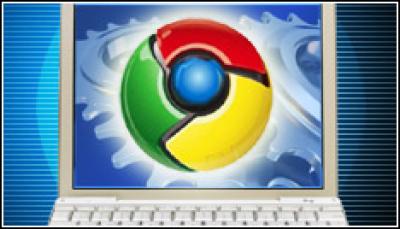Dell Modifies Chrome OS For Mini 10v Netbook

A Dell employee has gotten Chromium OS, the code behind Chrome OS that Google released to open source, to run on a Dell Mini 10v netbook
Google Chrome Operating System might be officially a year away from appearing in netbooks as a polished platform, but that shouldn’t stop some users itching to try it out in their machines today.
A Dell employee has gotten Chromium OS, the code behind Chrome OS that Google released to open source 21 November, to run on a Dell Mini 10v netbook.
Google Chrome OS is a Linux-based Web operating system Google is building to run on netbooks as an alternative to computers running traditional operating systems such as Microsoft’s Windows and Apple’s Mac. Those machines take several seconds to boot up, or even minutes if they are older models.
With boot speed a major calling card for Chrome OS, things bode well for the nascent software, according to Dell Technology Strategist Doug Anson.
Without a network connection, ChromiumOS is not very interesting,” Anson wrote on a Dell community blog on 25 November. “With a network connection, ChromiumOS shines. The Chromium browser is extremely fast and makes for a great Web-centric browsing experience. Boot time appears quick too – about 12 seconds from hitting the power button.”
That’s a tad slower than when Sundar Pichai, Google’s vice president of product management, booted up Chrome OS on an Asus Eee PC during Google’s Chrome OS launch to open source.
Pichai did it in 7 seconds, with another 3 seconds to load applications such as Google Talk, but it’s still quite a bit faster than loading Windows, Mac or Linux distributions such as Red Hat, SuSe or Ubuntu.
No matter. Geeks are going to be quite happy to test this out on a Dell Mini.
Anson got the Broadcom Wi-Fi adapter working for his image and found it functional but unstable. This will have to be improved because Chrome OS is geared solely for Web applications. Anson offered some caveats to his tinkering.
It will take more than 5-10 minutes for the ChromiumOS network connection manager to “see” the access points and allow users to select and connect. There are also issues with both the connection manager as well as the underlying components (wpa_supplicant) that can easily break or get stuck, so Anson advised users to reboot and try again.
To reboot the image, users have to press the “power” key on the Mini 10v because there is no “reboot/shutdown” menu option yet for Chromium OS.
Finally, Anson warned: “Use this image at your own risk – it comes to you totally unsupported and very minimally tested.”
Interestingly, Dell wasn’t even among the list of computer makers — Acer, Adobe, ASUS, Freescale, Hewlett-Packard, Lenovo, Qualcomm, Texas Instruments, and Toshiba — Google claimed to be working with when it first introduced Chrome OS last July.
That’s why it is encouraging that Anson, who told Engadget in July that Dell was interested in Intel’s Moblin Linux project, toyed with Chromium OS.
The fact that a Dell programmer tinkered with the code and passed on his findings to others is a sign of how liberating and rich open source can prove, as well as how Chrome OS is piquing curiosity.
Still, some experts see Chrome OS as being five to 10 years away from mass adoption in consumers and enterprises, respectively. The world is, after all, still propelled by Windows.
Anson released an USB key image file of his ChromiumOS boot here under the file name “ChromiumOS_Mini10v_Nov25.img.” To copy onto an USB key (8 gigabytes or greater), he advised users to find another Linux machine and utilize the “dd” command to put the image onto the USB key.